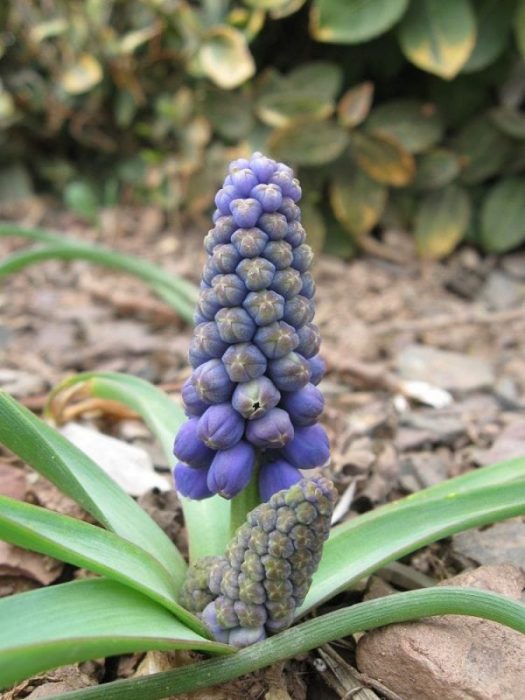The Advantages of Asexual Reproduction
The main advantages of asexual reproduction are a higher number of offspring, a mating partner is not required to reproduce, one can clone their DNA, and ability to better dictate reproduction location, timing, etc.
Though most, but not all, higher organisms like mammals reproduce sexually, a great many organisms reproduce asexually. Bacteria reproduce asexually, and so do things like sea sponges, starfish, slime molds, and some flowers.

How Asexual Reproduction Occurs
Asexual reproduction happens when an organism reproduces without combining its DNA with another organism. In effect, the offspring of the parent are clones of the parent, with the exact same DNA (though sometimes mutations occur). There are various forms of asexual reproduction, including budding, parthenogenesis, fragmentation and fission. The form of asexual reproduction depends on the type of animal.Binary fission occurs in species that are able to divide more or less down the middle, creating two individuals that are of the same size. Parthenogenesis is a form of asexual reproduction where embryos can grow without the fertilization of an outside source, and the offspring can be either haploid or diploid.
Budding is where a new organism forms while attached to the original organism, and at a certain point breaks away from the main body, though in some species the two organisms remain attached. Fragmentation is where the body of the original organism may break apart and separate individuals may grow, such as the case of sea stars where a sufficiently large broken limb can result in the generation of a new sea star.

The Benefits Of Asexual Reproduction

Asexual reproduction doesn’t require as much energy as sex because there is only one source of the DNA. Energy doesn’t need to be used to combine genetic material, which means DNA can more easily and quickly be passed onto the next generation. Asexual reproduction can also occur in many different environments. If an asexually reproducing organism can manage to adapt to an environment, it can be virtually guaranteed that the offspring of the organism will also be able to thrive in the environment. The key traits within an organism that allow it to thrive in its environment will definitely be passed on since the DNA of the offspring is the same as the parent. Asexual reproduction can help a species ensure its survival even when there are few mates and resources around.
Because asexually reproducing organisms can replicate by themselves, it only takes one organism to establish a new population or colony. A single parent can lead to the growth of an entire colony over time, and it becomes very easy for this organism to out-compete other organisms in the same ecosystem. Asexual reproduction also helps an organism or species ensure that its DNA is passed on, even if there are threats in the immediate area. If one organism is eaten, the genes of the organism will be safe in its offspring or brethren.
Plants that reproduce asexually don’t need seeds to grow, which is helpful for both the species of plants that reproduce asexually and for humans who rely on the plant. Losses of crops can be balanced by taking advantages of asexually reproducing species. Asexually reproducing species typically mature very quickly, in contrast to sexually reproducing species. This means that crops which reproduce asexually can quickly be grown and harvested.
Desvantagens da Reprodução Assexuada
While there are many advantages to asexual reproduction, there are also many drawbacks and disadvantages to asexual reproduction. Asexually reproducing species must deal with negative mutations longer than sexually reproducing species, lack diversity, have difficulty controlling population numbers, and have shorter lifespans.Maladaptive mutations stay around longer in asexually reproduction species. Because there isn’t another set of DNA to combine with, the maladaptive traits are passed down to offspring for generations. Because diversity is so limited in populations of asexually reproducing organisms, not only do maladaptive trains stick around longer but populations of organisms are also at greater risk from disease or parasites. If a parasite or disease is capable of compromising one organism, it is capable of compromising all of the organisms within that population, meaning that populations of asexually reproducing organisms can quickly fall. Changes in climate can also devastate asexually reproducing lifeforms.
Not only do asexually reproducing lifeforms struggle with the threat of being wiped out due to disease or climate change, they also struggle with overpopulation and crowding. Organisms which reproduce asexually tend to reproduce very quickly and in large numbers, frequently meaning their population levels balloon up to the point where the ecosystem can no longer sustain them, causing mass die-offs. If the species which reproduces asexually can’t move, this problem is even worse as the organisms must compete for space and resources in a small area. Asexually reproducing species also tend to have shorter lifespans than organisms that reproduce sexually, meaning there is less time to grow and pass on their DNA.
Advantages of Asexual Reproduction:
- Energy isn’t needed to find a mate.
- Large colonies can outcompete other organisms.
- Quick reproduction and maturation.
- Adaptive traits are preserved in new generations.
- Entire population can be susceptible to disease or parasites.
- Competition over resources and space may occur.
- Unfavorable climates can destroy whole colonies.
Nenhum comentário:
Postar um comentário
Observação: somente um membro deste blog pode postar um comentário.